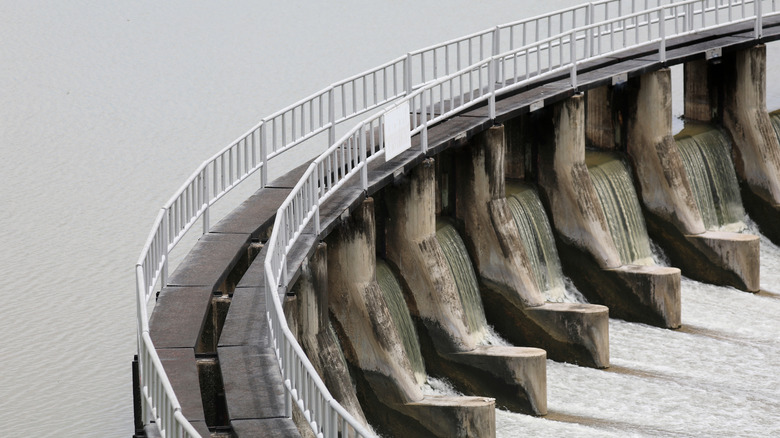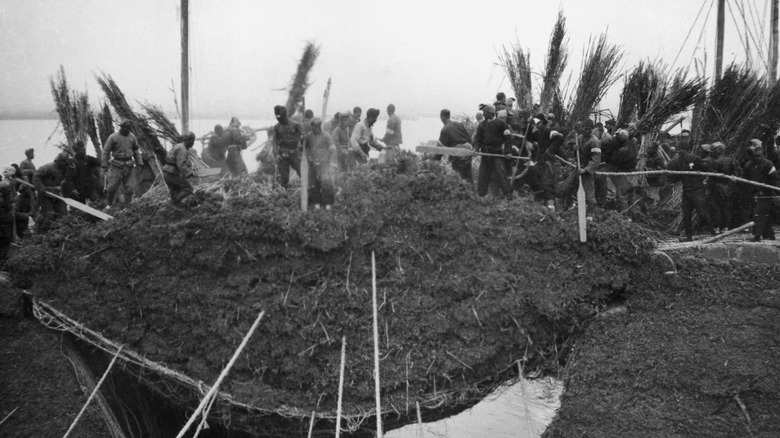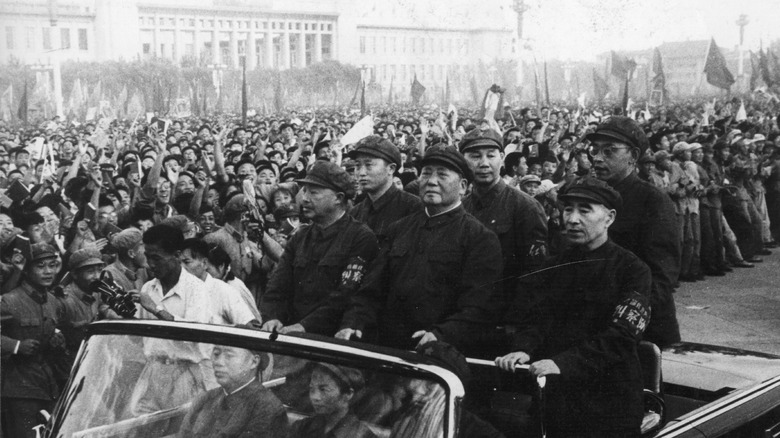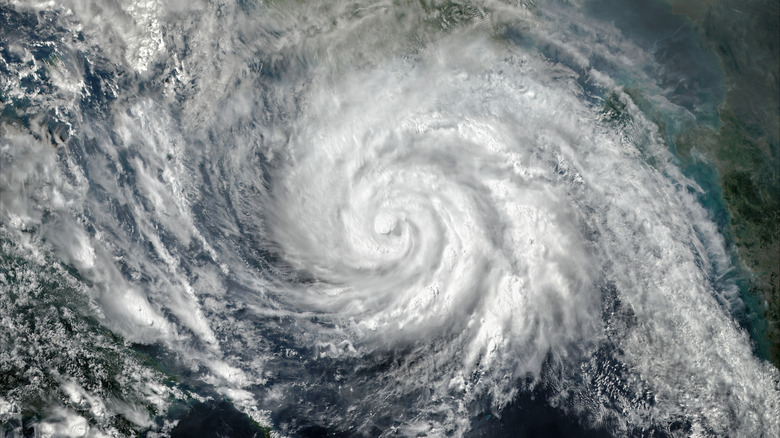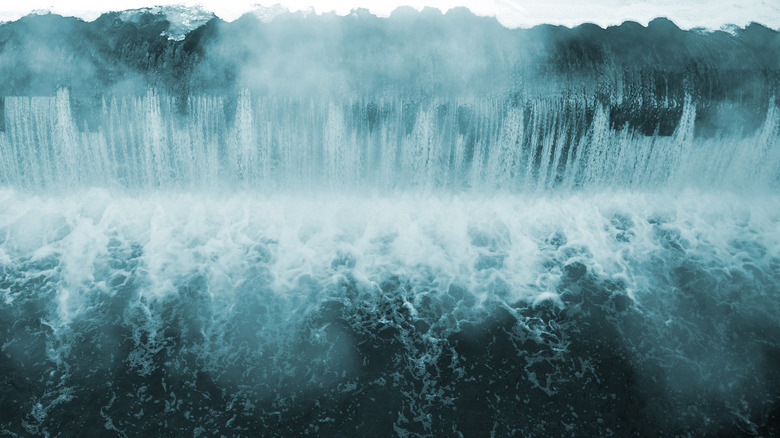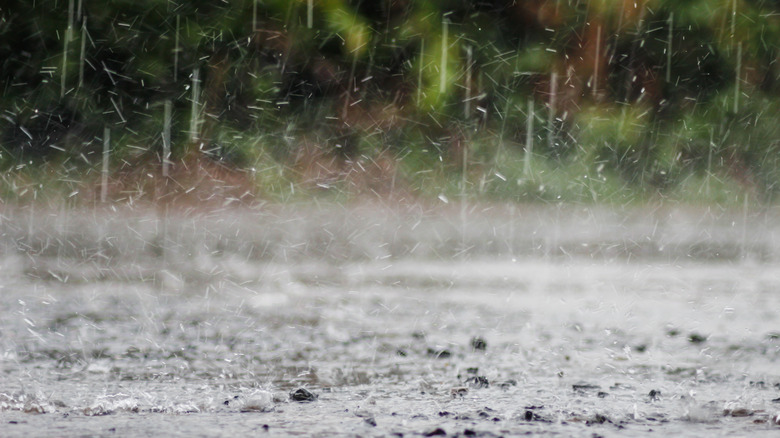Inside The Preventable 1975 Banqiao Dam Failure In China
Everyone knows the story of the Titanic and how deeming the ship "unsinkable" practically assured that it would take a detour to the bottom of the North Atlantic. However, it wasn't the only project that received such an ironic title. According to Cracked, China's Banqiao Dam was another that was thought to be fail-proof before it was proved otherwise. In casual conversation, the dam was referred to as the "iron dam" because much like the Titanic was believed to be unsinkable, the Banqiao Dam was thought to be unbreakable. It wasn't.
In 1975, Typhoon Nina rolled into mainland China, bringing with it huge amounts of rain. Three days of constant precipitation was too much even for an "unbreakable" dam like the Banqiao Dam. It burst, and the ensuing dam break killed thousands. Worse yet, it's believed that more than 100,000 people died after the initial break as epidemics swept through the area due to the contaminated water, per Britannica.
Despite such wide-scale devastation, the Chinese government was able to keep the severity of the incident under wraps for years, only acknowledging at the time that flooding had occurred.
The building of the Banqiao Dam
The Banqiao Dam was built in the early 1950s, and it was intended to serve two purposes (via Britannica). The dam was constructed in the Henan province, which sits in the eastern part of the country, where intense flooding was a persistent problem. One of the major problem areas was the Huai River Basin, which flooded multiple times before the Chinese government decided to build dams aimed at controlling the Huai river. While flood control was the motivating factor that led t the construction of dams like the Banqiao Dam, there was another benefit to building them. Notably, hydroelectric dams — like the Banqiao Dam — had the added benefit of producing electricity, per Timeline.
While the Chinese didn't have too much experience building this kind of structure, their neighbors to the north, the Soviet Union, did. The Soviets assisted with the construction, and soon, the mega-structure earned its nickname: "the iron dam." Author James Palmer later wrote in his book "Heaven Cracks, Earth Shakes" that this was an instance of "Maoist arrogance," an attempt to control the forces of nature.
The government overlooked legitimate concerns about the dam
Not everyone was on board with the plan for the Banqiao Dam, including one man who was working on the project. According to Timeline, hydrologist Chen Xing was concerned that building the dam would raise the water table and inadvertently increase the chance of catastrophic flooding. He repeatedly warned the powers that be about his concerns and offered suggestions for how to avoid them. For instance, Chen suggested that the project include 12 sluices — sliding gates that control the flow of water through the dam. The Banqiao Dam was only built with five. According to Timeline, the communist government labeled Chen a "right-wing opportunist," and he was removed from the project and sent off to a different city.
However, problems with the dam persisted, and in 1961, Chen was called back to help fix them. Unfortunately, he was called back once again, only this time it was to comb through the remnants of the destroyed dam in 1975.
Typhoon Nina clobbers China
In late July 1975, a tropical storm started to take shape in the skies above the Phillippine Sea. It churned over the warm tropical waters until it reached typhoon strength on August 1 as it traveled northwest toward China. Two days later, the system made landfall in China, and while this usually means that the storm would rapidly weaken, that isn't what happened with Typhoon Nina (per Bowdoin College).
After making its way into the interior part of the country, the typhoon slammed on the brakes and stalled out over Henan province, where it proceeded to dump obscene amounts of rain. According to The Economic Observer, the dam was built to withstand around 30 centimeters (approximately 11.8 inches) of rain, but the typhoon dumped a staggering 106 centimeters (41.7 inches). This figure was equivalent to the area's average yearly rainfall, and it all came in just 24 hours.
Workers at the dam kept the gates closed in hopes of controlling flooding down the river. But while that was the directive at the beginning, the storm knocked out communication between the dam and the rest of the area, so the dam workers had to decide on the best course of action. They decided to open the gates, but some of the five gates were partially blocked by debris before the typhoon even arrived.
The Banqiao Dam collapses
The rain continued until finally, in the early morning hours of August 8, 1975, the dam, once thought to be unbreakable, gave way. According to Britannica, a wave as much as 33 feet and as wide as 7 miles rushed down the river and toward towns in its path at around 30 miles per hour. One of the first towns affected was Daowencheng, which was swept away in an instant when the wave reached it, leaving all 9,600 residents dead.
The Banqiao Dam wasn't the only dam that failed that day — more than 60 others did as well, something that confirmed that Chen Xing's concerns were not only valid but correct, per Timeline. Among the dams that failed was the system's second biggest dam, the Shimantan on the Hong River. There was no early warning system or plan in place to evacuate towns in the firing line of a possible dam burst. The official death toll includes 26,000 deaths due to the Banqiao Dam burst, but, sadly, there were more fatalities to come.
The Aftermath
In addition to the tens of thousands killed by the initial wave of water that rushed through the Huai River Basin, an estimated 145,000 people died in the weeks and months that followed after coming into contact with contaminated water, per Britannica. While the Chinese government couldn't control the weather and the extreme amounts of rain that came along with Typhoon Nina, the disaster has still been considered "man-made" by organizations like Human Rights Watch, which cited poor water control policies in a 1995 report.
Chen Xing was called back to the Banqiao Dam as the nation tried to clean up and makes sense of such a large-scale tragedy. The hydrologist was aboard an aircraft with Chinese officials to survey the damage — damage that could have potentially been avoided had they listened to him more than two decades earlier, per Timeline. According to Cracked, coverage of the incident in Chinese media was limited to mentions of regional flooding and that the army had heroically saved the day. That, of course, was not true. A book with details of the incident wasn't published for another 20 years, while the government only declassified information about it another 10 years later.
The Banqiao Dam was rebuilt, and its reconstruction was completed in 1993.
